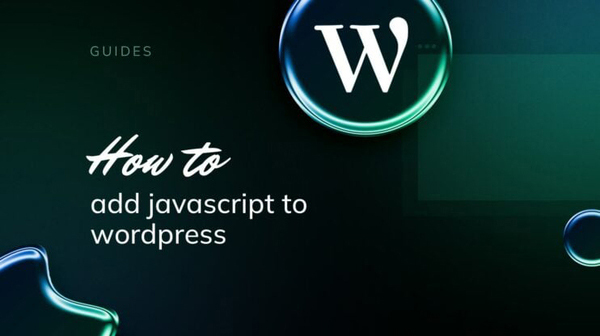A Beginner’s Guide to How Do I Create a Desktop Shortcut to a Website
Getting Started with How Do I Create a Desktop Shortcut to a Website
How Do I Create a Desktop Shortcut to a Website
Web hosting is a service that allows individuals and organizations to make their websites accessible on the internet. In simple terms, web hosting is like renting space on a computer server to store and host your website files. This service enables users to publish their website contents online, making it available for viewing by people around the world.

Getting Started with How Do I Create a Desktop Shortcut to a Website
How Do I Create a Desktop Shortcut to a Website
The cost of web design can vary significantly depending on a number of factors. One of the primary factors that will impact the cost of your website is the complexity of the design. A simple, static website with basic functionality will typically cost less than a complex e-commerce site with custom features and integrations. Additionally, the number of pages and features you require will also impact the cost of your website. For example, a website with a large number of product pages and a sophisticated search function will cost more than a simple informational site.
The level of customization required for your website will also influence the cost. Pre-designed templates are a cost-effective option for businesses on a budget, but they may not provide the level of customization and branding that you desire. A custom-designed website, on the other hand, will be tailored to your specific needs and can help set your business apart from the competition. However, custom design comes at a higher price tag, so it’s important to weigh the benefits against the cost.
Another factor that can impact the cost of web design is the platform or content management system (CMS) that is used to build your website. Popular platforms like WordPress, Shopify, and Squarespace offer a range of templates and features that can help reduce development costs. However, if you require custom functionality or integration with other systems, you may need to invest in a more advanced CMS or even build a custom website from scratch, which can be more expensive.
In addition to design and development costs, ongoing maintenance and updates should also be factored into the cost of your website. Regular updates to your website’s content, security, and functionality are essential to keep your site running smoothly and to ensure that it remains relevant to your audience. Some web design agencies offer maintenance packages as part of their services, while others charge on an hourly basis for updates and support. It’s important to clarify these costs upfront so that you can budget accordingly.
When shopping for web design services, it’s important to do your research and compare quotes from multiple providers. Prices can vary widely depending on the agency’s location, expertise, and level of service. Be wary of prices that seem too good to be true, as they may indicate low-quality work or hidden fees. Look for a web design agency that has a proven track record of delivering high-quality websites within your budget.
To get the best value for your money, be clear about your goals and requirements when discussing your project with a web design agency. Provide examples of websites that you like, as well as any specific features or functionality that you need for your site. A good designer will be able to provide recommendations based on your budget and objectives, helping you to achieve your desired results without breaking the bank.
What is SEO?
SEO is the process of optimizing your website in order to improve its visibility in search engine results. By using relevant keywords and creating high-quality content, you can increase your website’s ranking in search engine results pages (SERPs). This, in turn, can drive more organic traffic to your website, leading to more leads and conversions.
Types of SEO
There are three main types of SEO: on-page, off-page, and technical. On-page SEO involves optimizing your website’s content and structure, including keyword research, meta tags, and internal linking. Off-page SEO refers to strategies used to promote your website outside of your own website, such as backlinking and social media marketing. Technical SEO involves optimizing your website’s backend, including site speed, mobile-friendliness, and crawlability.
Keyword Research
Keywords are the foundation of any successful SEO strategy. By researching and targeting the right keywords, you can attract the right audience to your website. Start by using keyword research tools such as Google Keyword Planner or SEMrush to find relevant keywords with high search volume and low competition. Once you have a list of keywords, incorporate them into your website’s content, meta tags, and URLs.
Content Creation
Content is king when it comes to SEO. High-quality, relevant content can drive traffic to your website and improve your search engine ranking. Create engaging blog posts, articles, and videos that provide value to your target audience. Use your targeted keywords strategically throughout your content, but avoid keyword stuffing, as this can negatively impact your SEO efforts.
On-Page Optimization
On-page optimization involves optimizing your website’s content and structure to improve its visibility in search engine results. Use relevant keywords in your meta tags, headings, and content. Create unique, descriptive meta titles and meta descriptions for each page on your website. Improve your website’s user experience by optimizing its loading speed, mobile-friendliness, and navigation.
Off-Page Optimization
Off-page optimization involves promoting your website outside of your own website to improve its authority and credibility. Build backlinks from reputable websites in your industry by guest posting, submitting your website to online directories, and participating in forums and communities. Use social media to share your content and engage with your audience.
Technical SEO
Technical SEO involves optimizing your website’s backend to improve its crawlability and indexing by search engines. Improve your website’s loading speed by minifying CSS and JavaScript files, compressing images, and enabling browser caching. Make sure your website is mobile-friendly and responsive, as Google gives preference to mobile-friendly websites in search results. Create a sitemap and submit it to search engines to help them find and index your website’s pages.
Monitoring and Analysis
Once you have implemented your SEO strategies, it’s important to monitor and analyze their performance. Use tools like Google Analytics and Google Search Console to track your website’s traffic, keywords, and ranking in search engine results. Analyze your data regularly to identify trends, optimize your strategies, and improve your website’s performance.

How Do I Create a Desktop Shortcut to a Website Checklist
How Do I Create a Desktop Shortcut to a Website
In conclusion, AI website builders offer a quick and easy way to create a professional-looking website without the need for coding knowledge. Whether you are a small business looking to establish an online presence or an entrepreneur looking to showcase your products or services, AI website builders can help you create a website that reflects your brand identity and attracts customers. With their user-friendly interfaces and AI-powered tools, platforms like Wix, Squarespace, Weebly, and Adobe Dreamweaver are some of the best options available in the market today. Choose the AI website builder that best suits your needs and start building your online presence today.

